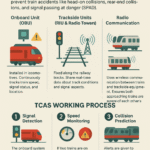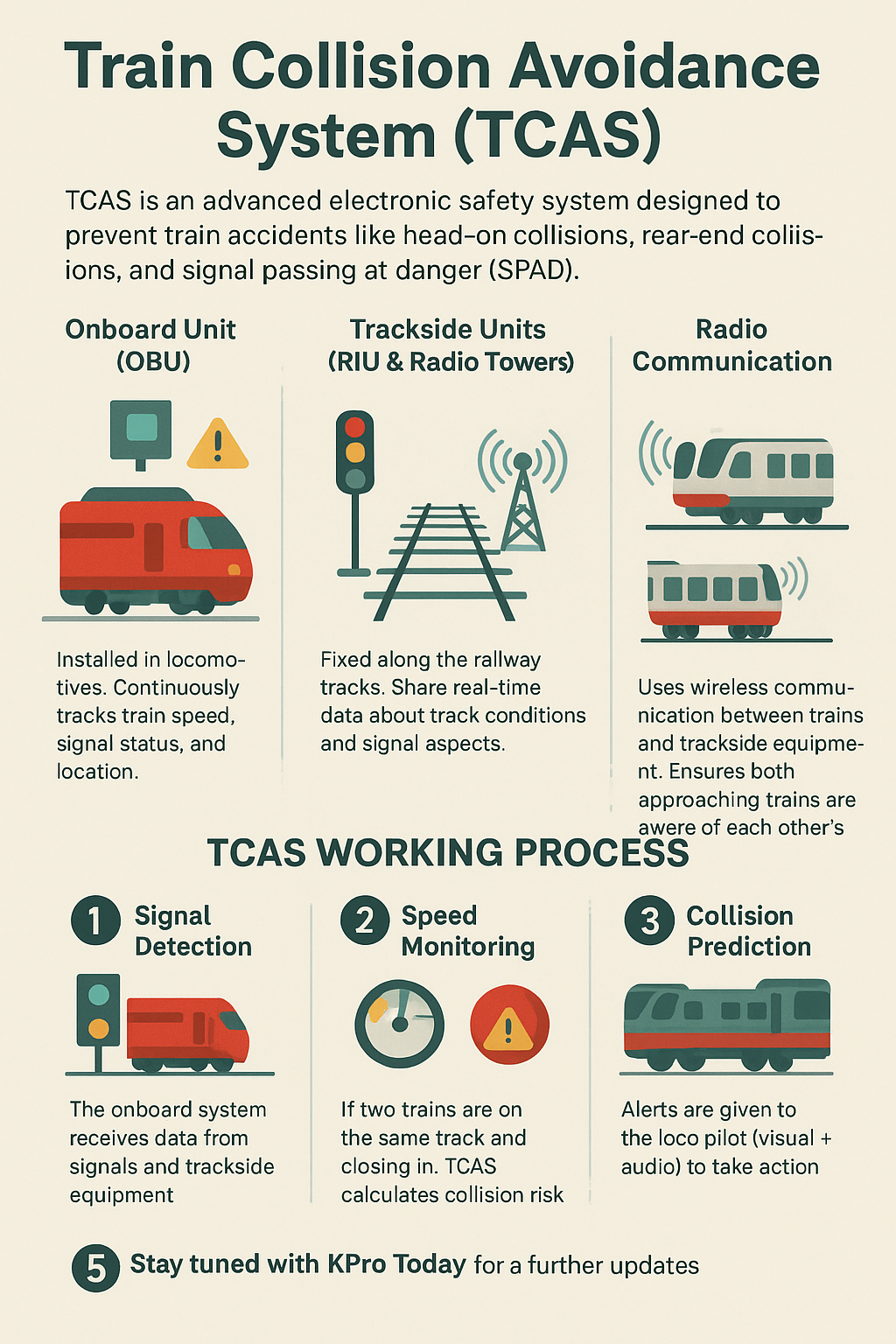Railways are the lifeline of India, carrying millions of passengers and tons of freight every day. With such a huge network, ensuring safety is always a top priority. To reduce accidents and improve efficiency, Indian Railways has developed an indigenous technology called the Train Collision Avoidance System (TCAS), also known as Kavach.
What is TCAS?
TCAS is an advanced electronic safety system designed to prevent train accidents like head-on collisions, rear-end collisions, and signal passing at danger (SPAD). It works as a communication link between trains, trackside equipment, and the control center.
In simple words, TCAS acts like a protective shield that constantly monitors train movement and automatically applies brakes if there is a risk of collision or if the loco pilot fails to respond.
How Does TCAS Work?
The working of TCAS involves several components working together:
- Onboard Unit (OBU):
- Installed in locomotives.
- Continuously tracks train speed, signal status, and location.
- Trackside Units (RIU & Radio Towers):
- Fixed along the railway tracks.
- Share real-time data about track conditions and signal aspects.
- Radio Communication:
- Uses wireless communication between trains and trackside equipment.
- Ensures both approaching trains are aware of each other’s position.
- Central Control (SMC / Control Center):
- Receives updates and provides coordination for large networks.
TCAS Working Process (Step by Step)
- Signal Detection: The onboard system receives data from signals and trackside equipment.
- Speed Monitoring: The train’s speed is continuously checked against permitted limits.
- Collision Prediction: If two trains are on the same track and closing in, TCAS calculates collision risk.
- Warning Alerts: Alerts are given to the loco pilot (visual + audio) to take action.
- Automatic Braking: If the pilot fails to respond, TCAS automatically applies the brakes to stop the train.
Key Features of TCAS
- Prevents head-on and rear-end collisions.
- Controls overspeeding by automatic intervention.
- Provides continuous updates to loco pilots.
- Works in all weather conditions.
- Integrated with station interlocking systems.
Why TCAS is Important for India
- India has one of the largest railway networks in the world.
- Human errors like SPAD (Signal Passed at Danger) are a leading cause of accidents.
- TCAS reduces dependency on manual operations and improves safety and reliability.
- It is an indigenous system, developed by Indian Railways and RDSO, reducing foreign dependence.
The Road Ahead
The Government of India plans to expand Kavach TCAS across major routes and busy corridors. With more implementation, Indian Railways will not only improve safety standards but also move closer to becoming a modern and world-class railway network.
✅ In short: TCAS is like a guardian angel for trains, ensuring safety by preventing accidents, saving lives, and building trust in India’s railway system.


